Some of the links in this post may be affiliate links.
Have you just purchased a fiddle leaf fig, or perhaps are are struggling with your current plant and you’re not quite sure what to do? This plant is everywhere and is often abused due to the abundance of misconceptions on how to care for it.
If you’d like concrete, practical information on how to help your Ficus lyrata thrive, keep reading. I promise that you will gain some valuable tips from reading this post.
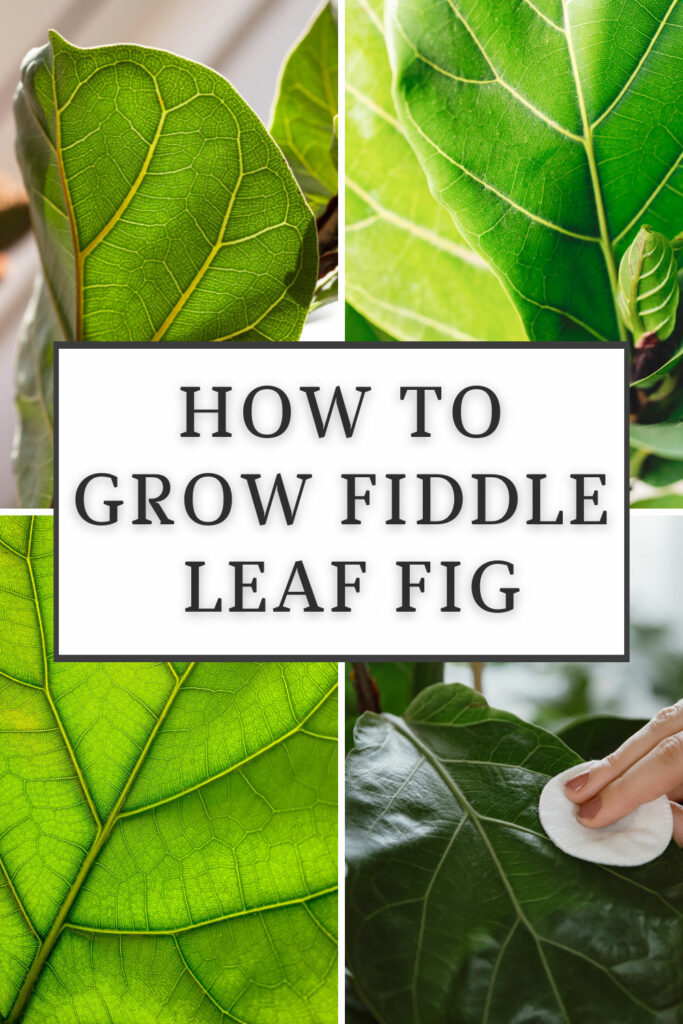
Table of Contents
Table of Contents
HOW TO GROW FIDDLE LEAF FIG
Here are 9 indispensable tips on growing fiddle leaf fig trees indoors. Under the right conditions, they make for a wonderful indoor plant and a well-grown specimen makes for an impressive living room specimen.
1. LIGHT
In most cases, when people have approached me with advice on their ailing fiddle leaf fig, one of the main trouble points has been light. If you have heard that fiddle leaf fig plants don’t like direct sunlight, think again.
Ficus lyrata is native to western Africa, but is commonly grown in the ground in many warm climates around the world. I’ve witnessed beautiful specimens growing in full sun in Mexico, California, Florida and many other locations.
Since this plant grows well in full sun outdoors, it means that it is virtually impossible to overdo the light indoors. Indoors, the light intensity is much weaker than it is outdoors. This goes even for direct sun exposure indoors.
Please note that if you have burned your plant, it was probably due to not acclimating your plant slowly enough to stronger light. It doesn’t mean that this plant can’t take direct sun!
If you’re not providing enough light, this will start the downfall of your plant. Here are some tips on light that are crucial for your fiddle leaf fig, as well as some commentary on window exposure.
First off, at a bare minimum, your plant should be immediately in front of ANY window. Certain exposures are better than others, and here are some tips.
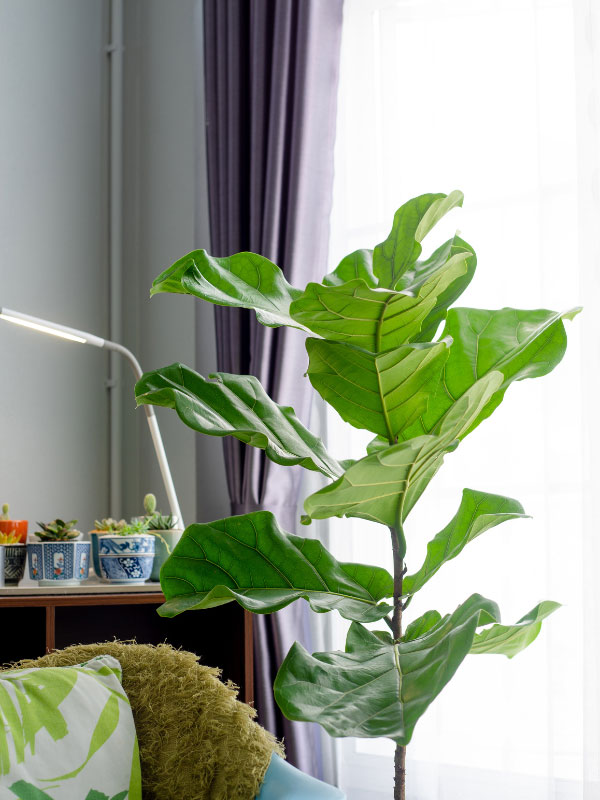
NORTH-FACING WINDOWS
If you live in the northern hemisphere, north-facing windows will receive no direct sun. This is the least ideal window exposure for your fiddle leaf fig. It is possible to grow it in this exposure, but they really need more light to do their best.
If you live in the southern hemisphere, the equivalent window would be a south-facing window.
SOUTH-FACING WINDOWS
In the northern hemisphere, a southern facing window would be the best choice since this exposure receives plenty of light and the most direct sun exposure.
The equivalent exposure in the southern hemisphere is a north-facing window.
EAST-FACING WINDOWS
Regardless where you live, an unobstructed east-facing window would provide direct sun in the morning, which is also great.
WEST-FACING WINDOWS
A west-facing window is also a great spot for your plant. An unobstructed western window will provide afternoon sun wherever you live, and these locations can typically be warmer than east windows, which is great for growth.
Of course, the conditions I describe above are for unobstructed windows. If there are any trees, bushes, buildings, etc. around the windows outdoors, this will reduce the amount of light dramatically.
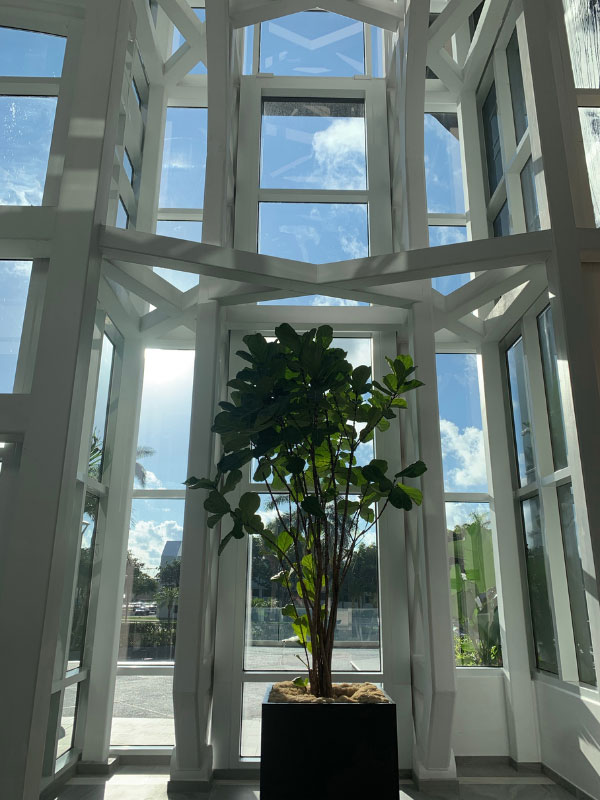
Under no circumstances should you place your plant in a dark corner. You’re asking for immediate failure if you do this.
And do not assume that photos on social media are a representation of where these plants should be placed. Most of the time, these photos are staged and the owner probably just purchased the plant and placed it there.
Forget about the “bright indirect light” hogwash. If you can, give your fiddle leaf fig at least a few hours of direct sun a day for best results.
This is especially important during the winter months when many houseplants struggle from less light, especially if you live in areas with short, dark winters.
It wouldn’t be unusual for some leaf drop to occur during periods of lower light in the winter. The lower leaves would turn yellow and fall off when your fiddle leaf fig is put in a lower light environment. This can also happen if you let your potting mix go too dry for too long.
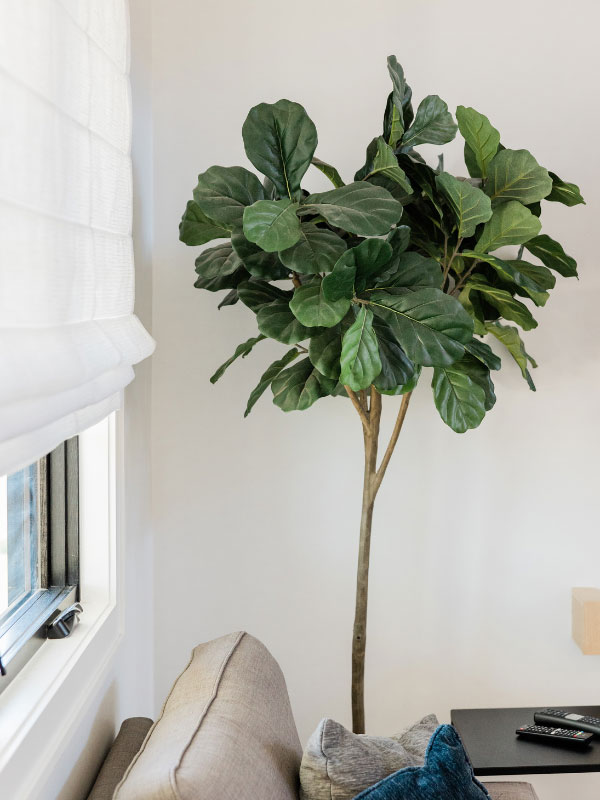
2. WATERING
How often should you water your fiddle leaf fig?
As far as watering goes, forget about any sort of watering schedule. You will need to learn to judge the soil moisture for your individual plant.
The “once a week” watering schedule will not cut it simply because all of our growing conditions indoors are different, so when you water your plant will naturally vary.
Think about it. Plants in a tiny 4 inch pot will dry out a lot more quickly than plants in much larger pots.
If your plant is growing in warmer temperatures, this will also cause the potting mix to dry out more quickly. And more light means that your plant will dry out more quickly.
There are other factors as well, but this is just to give you an idea of why it’s important not to follow a strict watering schedule.
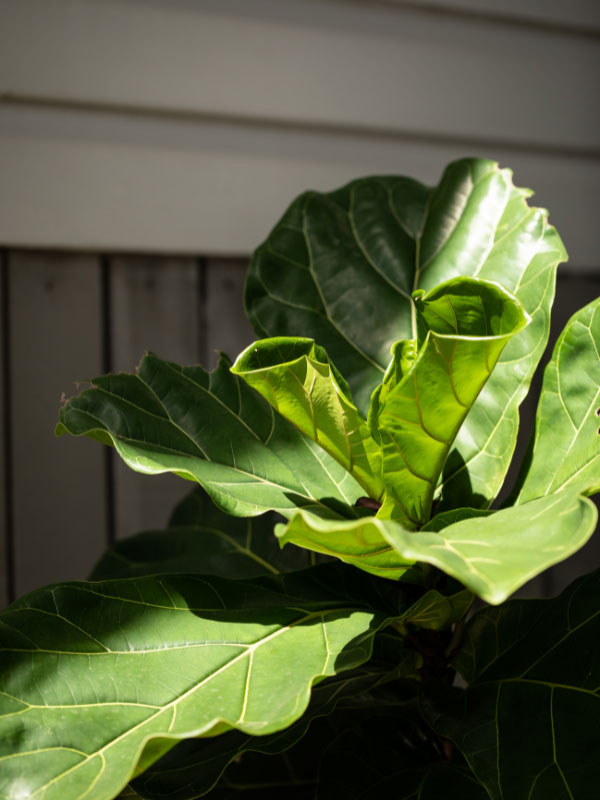
A schedule is good to have as a checkpoint only to see IF your fiddle leaf fig tree needs water or not.
How can you tell when to water? Simply stick your finger into the potting mix. In a smaller pot, allow the top inch of soil to dry out, and then water.
If you have a larger pot, say, 8 or 10 inches in diameter or larger, you can let the top 2-3 inches of soil dry out safely before you water again.
How should you water? One word: thoroughly.
Forget about the “overwatering” myth. If you follow the tips in this post, you will banish any fear of “overwatering.”
Always moisten ALL of the soil, so make sure to circle your watering can all around the surface of your potting mix. Remove any excess water that may have collected in the saucer below. Letting your plant sit in standing water for extended periods of time will encourage root rot.
It’s best to avoid cold water when watering, and only use room temperature or tepid water to avoid shocking your plant.
I would highly advise against using a moisture meter to judge when to water. I’ve known too many people that have killed their plants that way because most of the inexpensive meters are simply not reliable and produce misleading and false readings.
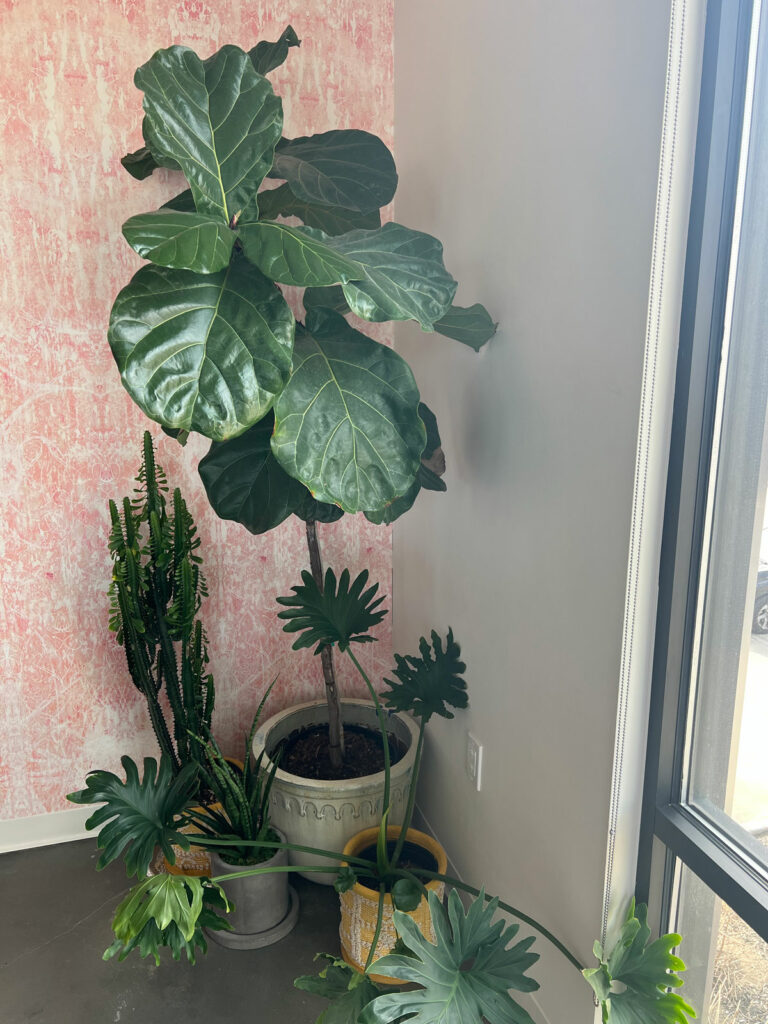
3. FERTILIZING
When should you fertilize your fiddle leaf?
A motto I like to follow for fertilizing is “weakly, weekly.” Well, you should know by now that I don’t have a watering schedule, but bear with me. By this I mean fertilize with every watering.
How is this not too much? Because I like to fertilize very dilutely, so it’s safe to do with every watering.
My fertilizer of choice for fiddle leaf fig and all of my houseplants is Dyna-Gro Grow. It is urea-free and won’t burn your plants. In addition, it contains ALL of the macro and micronutrients that plants need.
I simply use 1/4 to 1/2 teaspoon of Dyna-Gro Grow per gallon of water and use this at every watering. Another benefit to fertilizing dilutely at every watering is that you don’t have to remember the last time you fertilized since you’ll be using it every time.
As far as if you should fertilize in the winter time, my short answer is that it depends. If your plant has stopped growing (likely due to shorter days and less light), then stop fertilizing until the plant perks up in late winter or early spring.
If your plant is still growing in the wintertime, you can continue to fertilize it. It all depends on where you live and what your conditions are, so you’ll have to be adaptable.
4. POTTING MIX
What type of soil should you use for your plant?
A good general indoor potting mix blend to use is 3 parts of a good all-purpose potting mix with 1 part perlite. There are many mixes that will work well, as long as they are well drained and your pot dries out in a reasonable about of time.
You can make chunkier mixes by adding coarse materials such as orchid bark, but these will dry out a lot more quickly. Experiment with what works for your own environment.
If you’re looking for an amazing potting mix that you can use straight out of the bag for your Ficus, check out the Rainforest Soil Blend from Oh Happy Plants. This is an amazing mix and you will get 10% off at checkout automatically if you use my link.
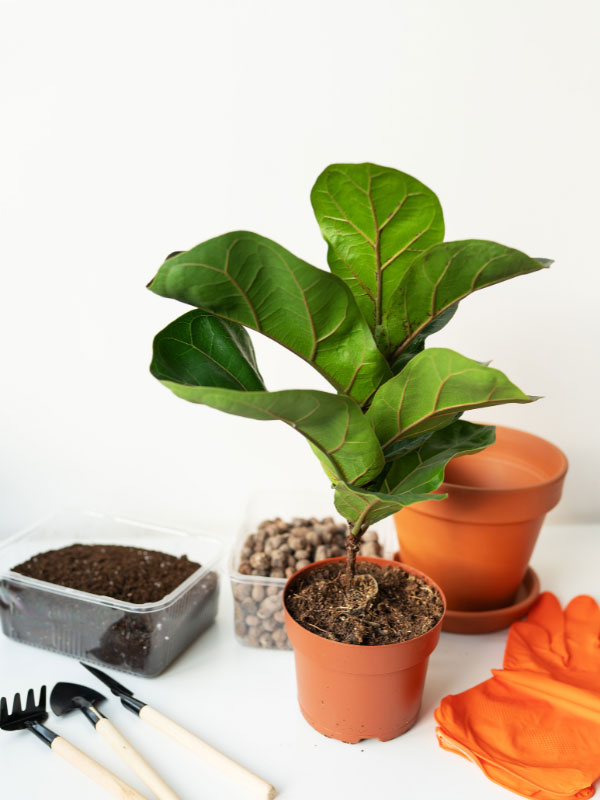
Refer to my post for best soil for fiddle leaf fig for more details.
5. REPOTTING
What size pot should you use for your fiddle leaf fig?
When it comes time for a new pot, a good general rule of thumb is to only go up one pot size. For example, if your plant is in a 6-inch diameter pot, only go up to an 8-inch diameter pot.
The main reason for this is that if your volume of soil is too big (compared to the root system), it will take much longer to dry out, thus increasing the risk of root rot.
Some indications that your fiddle leaf fig needs a new pot are:
- Roots are coming out of the drainage holes
- There may be roots matted at the surface of the soil
- You may notice that the soil is drying out a lot faster than it used to
Of course, the only way to really know for sure if your plant needs a bigger pot is if you slip the root ball out of the pot and inspect it. If it comes out in one piece, it’s probably ready for a bigger pot.
If the root ball has tightly wound roots, it’s definitely time for a bigger pot. Just make sure that you loosen the roots a bit before placing your plant in a bigger pot (and remember, only go one size bigger).
Loosening the root ball up a bit will help new roots to grow into the new potting mix in the new pot.
6. PRUNING
If your fiddle leaf fig plant has a single trunk and is not branching out at all, and you’d like it to branch out, pruning is a good way to accomplish this.
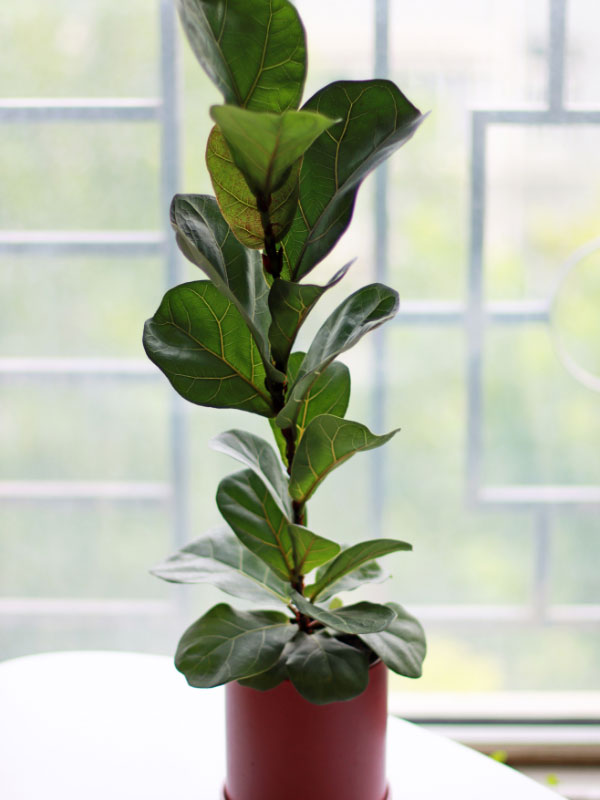
If you want a nicely branching plant, it’s a good idea to prune it before it gets terribly tall. At the point where you prune it, your plant will likely grow at least 2 new branches. And as those grow, you can continue to prune in the future to encourage more branching.
Check out my rubber plant pruning blog post because you would apply the exact same principles. You can prune a fiddle-leaf fig plant (Ficus lyrata) the same way say that you prune a rubber plant (Ficus elastica).
It’s best to avoid pruning in the wintertime. The very end of winter or early spring, when the growing season normally starts for many of us, would be a good time to start pruning, and you can certainly also do it later in the summer as well.
7. DUSTING
Because of its large leaves, dust will accumulate very quickly on your plant. It’s important to clean off your plant’s leaves to remove the accumulation of dust so your plant can grow better.
Simply take a damp sponge or paper towel and wipe off the surface of your leaves. If your plant is small and you can move it easily, you can also take it to your sink or shower and bathe your plant to remove accumulated dust.
If you get into a good routine with dust removal, it’s also a good tactic to manage/prevent pests such as spider mites, scale insects, and more. This provides a good opportunity as a checkpoint with your plant to monitor any potential pests before things get out of control.
Plain water is best to use to clean leaves. Avoid any commercial leaf shine products. Not only are these not necessary, but they are not healthy for the plant.
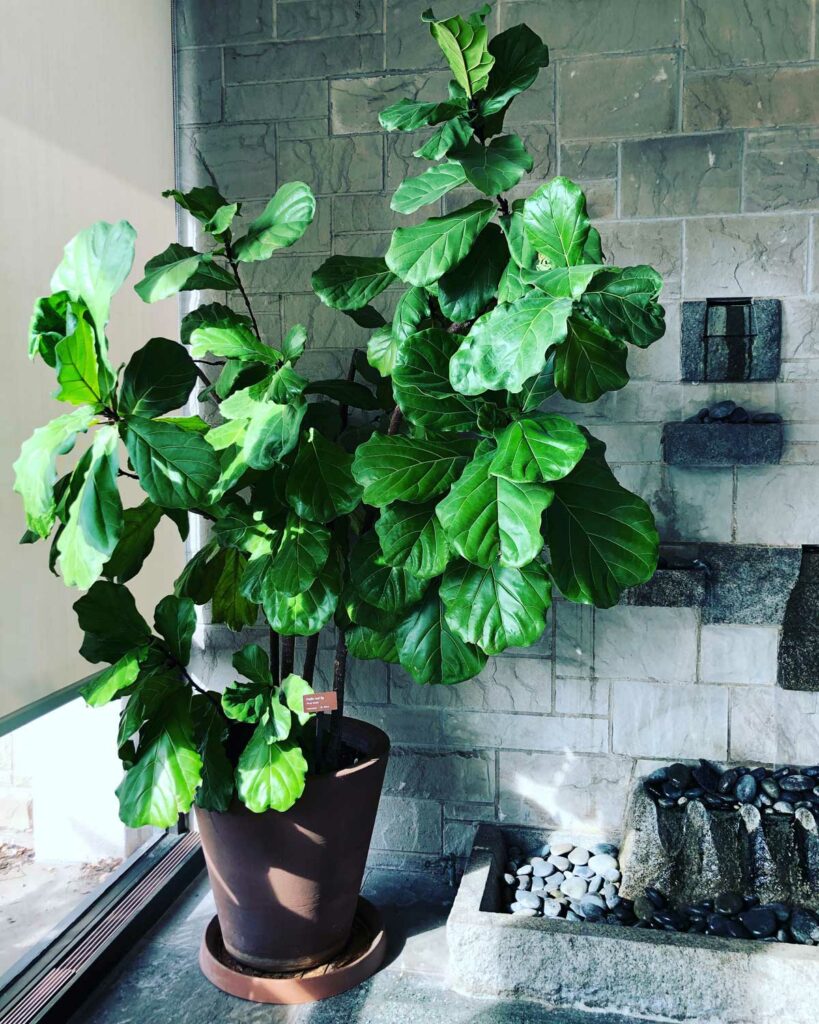
8. ROTATING YOUR PLANT
Regularly rotating your fiddle-leaf fig tree is important for balanced growth. Plants will naturally grow towards the window (in a phenomenon known as phototropism), so we must rotate our plants in order for the plant to look balanced.
There are a couple ways to do this. Some people give their pot a quarter turn as each watering. I simply turn the plant around 180 degrees when I see the growth start to turn too much in one direction.
You can also just rotate it weekly if you’d like.
9. TEMPERATURE & HUMIDITY
I always tell people that if you are comfortable indoors, your plants will be comfortable too. As a general rule of thumb, 60-85F (16-29C) is a great range for your plant.
Do keep your plants away from heating vents if you can.
Although your plant can tolerate average indoor humidity, it would be best to keep humidity levels in the 40-60% range, particularly during the winter.
Maintaining a more humid environment will also help (but not eliminate) spider mites.
You may also be wondering, how often should I mist my fiddle leaf fig?
To be very clear, misting does NOT increase humidity. It just wets your plant’s leaves. Although misting would be a great way to moisten your leaves so you can wipe off dust.
The best way to really increase humidity is to purchase a good humidifier.
FIDDLE LEAF FIG QUESTIONS & ANSWERS
IS FIDDLE LEAF FIG TOXIC TO CATS?
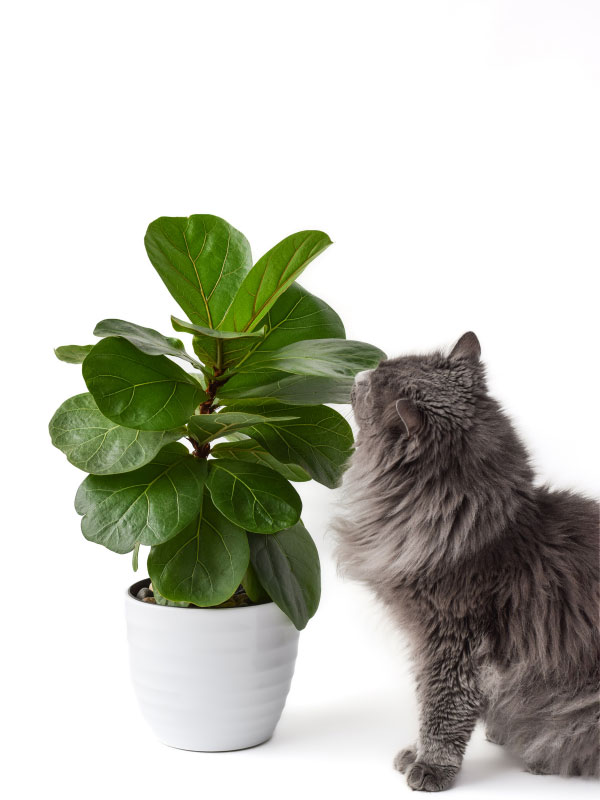
According to the ASPCA, fiddle leaf fig is toxic to cats and dogs due to insoluable calcium oxalate crystals.
Oral irritation, vomiting, and more can occur if ingested.
WHY IS MY FIDDLE LEAF FIG DROOPY?
If your entire plant is drooping, the most common causes are the following:
- Your potting mix may have gone completely dry for too long. If so, give your plant a really thorough watering and it should recover if you haven’t pushed it too far.
- If your plant is drooping and you feel the soil and it’s wet, it may have stayed wet for too long and potentially have root rot.
WHY IS MY FIDDLE LEAF FIG DROPPING LEAVES?
This can be due to numerous reasons, with the most common reasons being:
- Moving the plant from a high light location to a lower light location.
- Sudden temperature swings (even being too close to heating and cooling vents).
- Potting mix that has gone too dry.
I hope you’ve enjoyed this post on how to grow fiddle leaf fig. Do you have a FLF? Comment below. I’d love to hear!
HOW DO YOU PROPAGATE FIDDLE LEAF FIG IN WATER?
For a step by step description, read my blog post on propagating fiddle leaf fig in water.

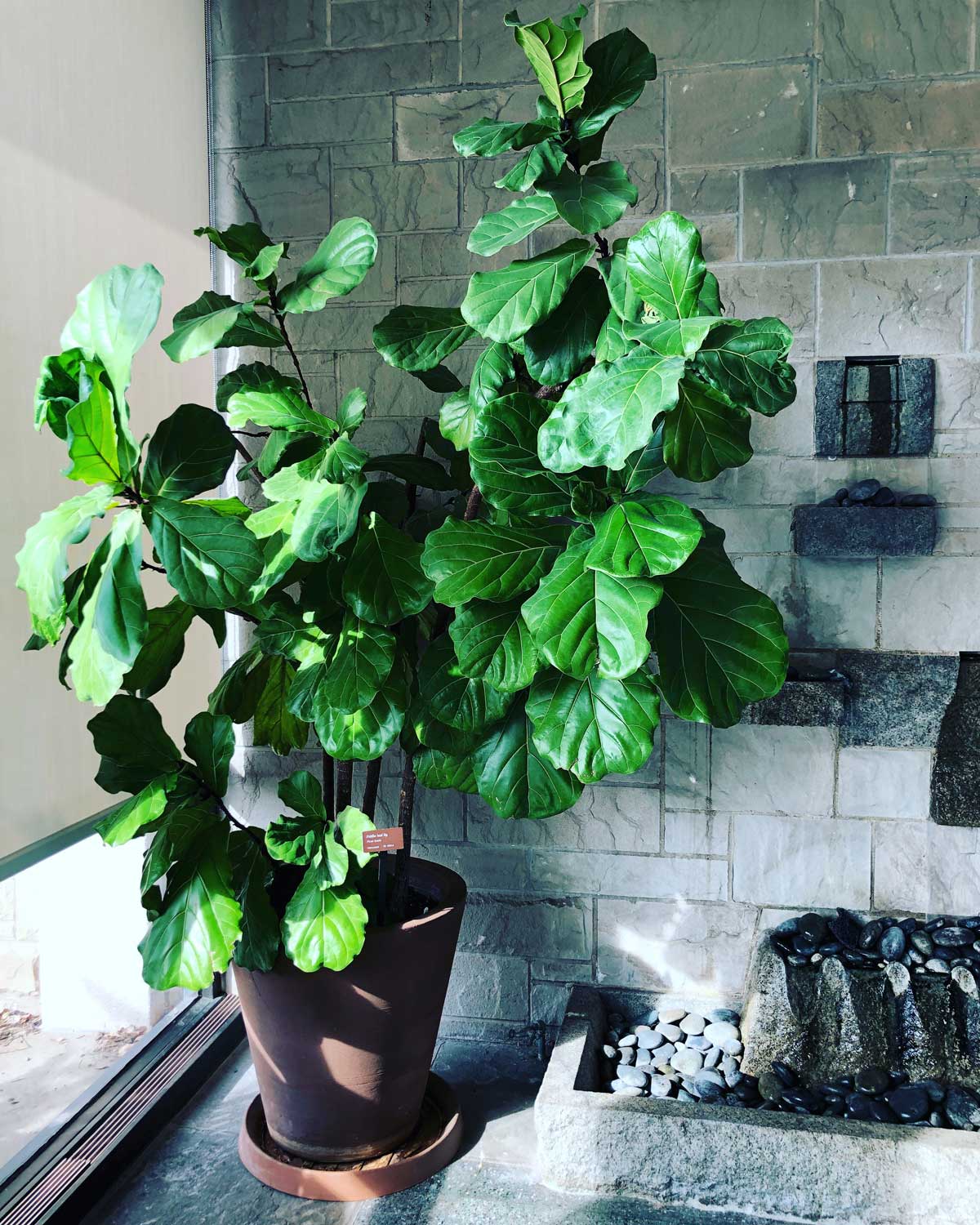
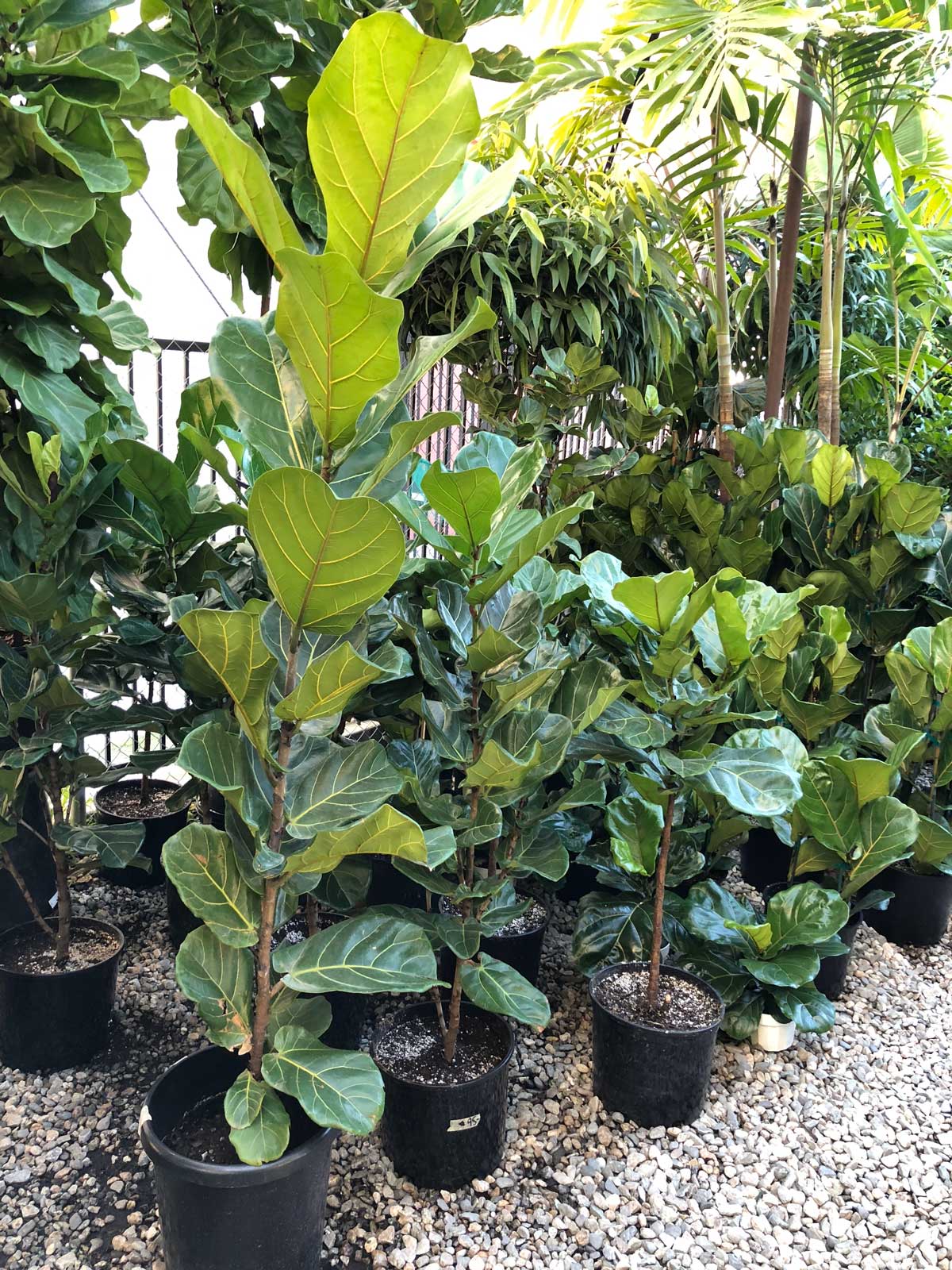
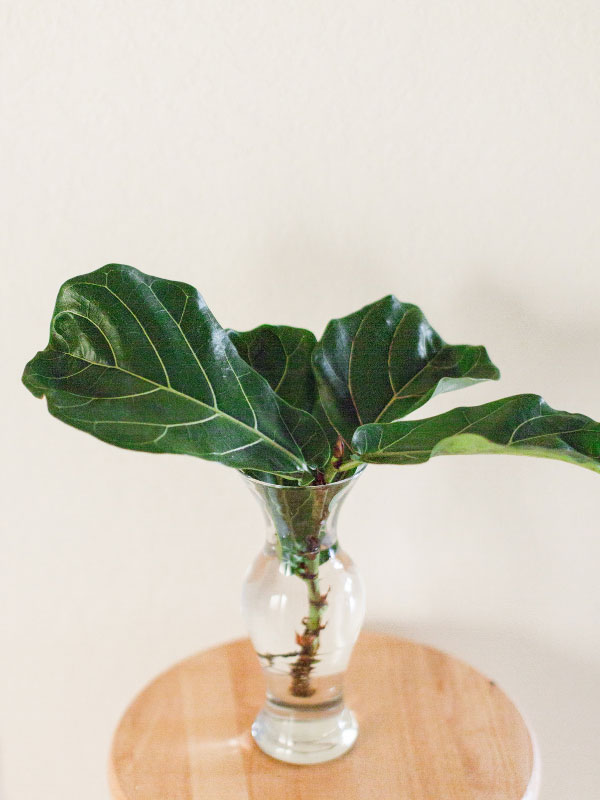
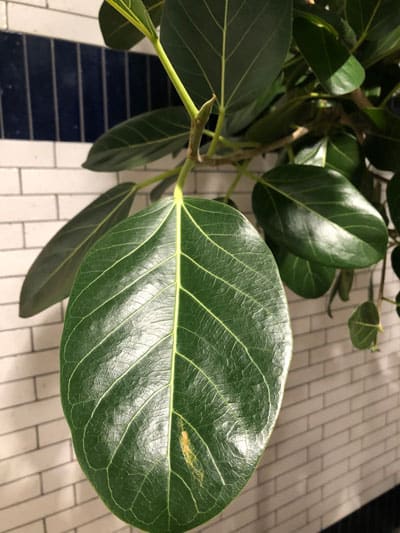
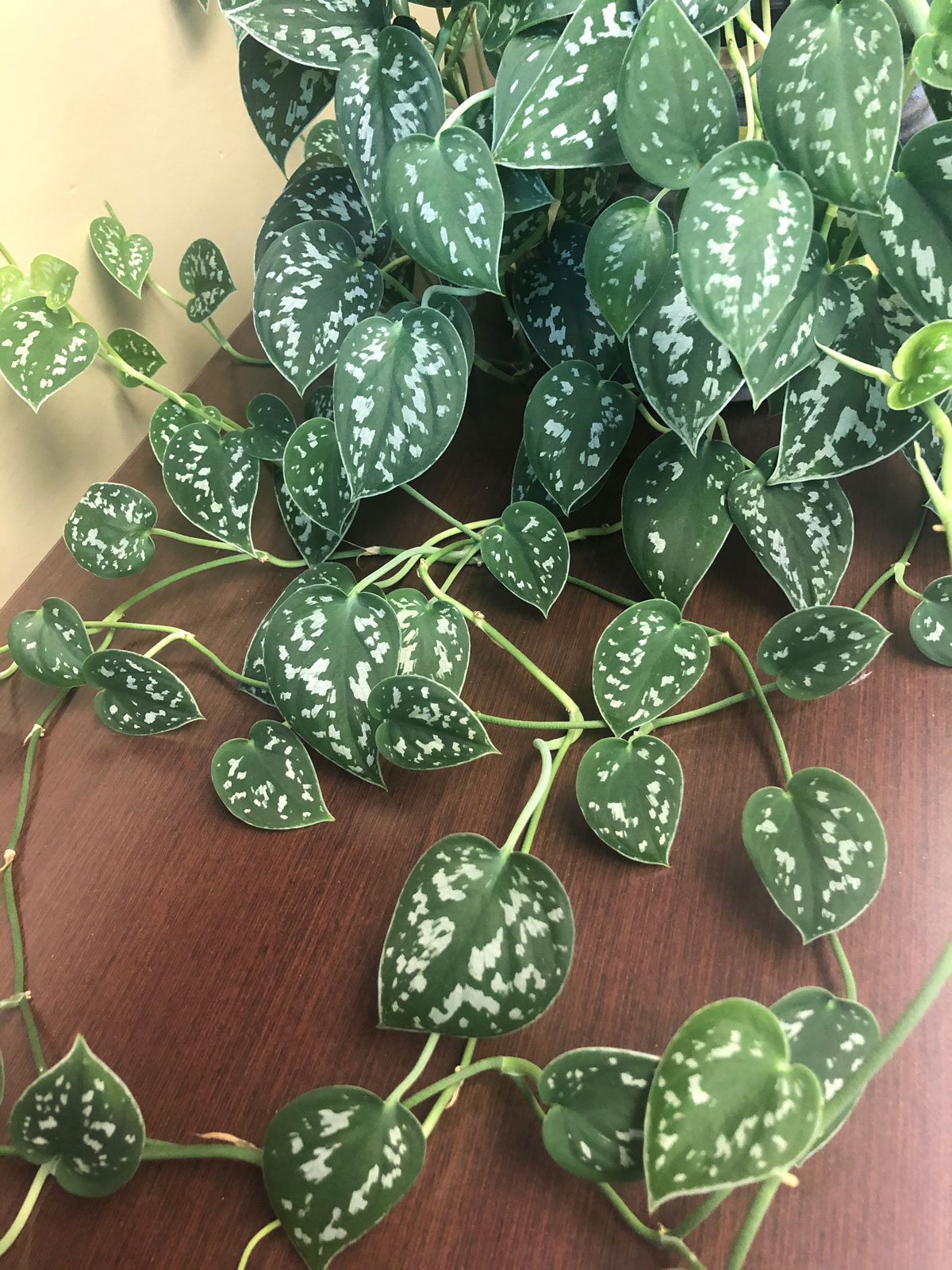
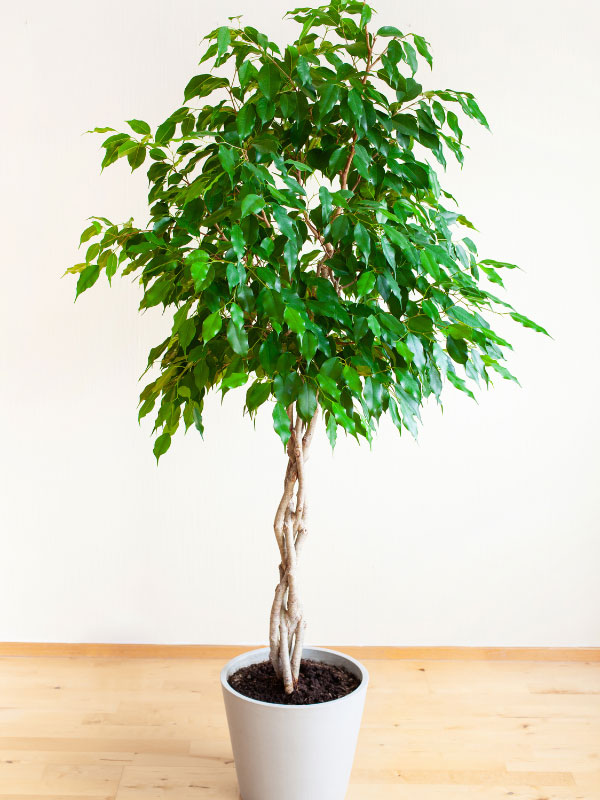
Kelly
Monday 15th of September 2025
My fiddle leaf fig has red spots on its new leaves
I understand this is an edema from overwatering
Should I worry
Raffaele Di Lallo
Friday 19th of September 2025
Hi Kelly! If the overall plant looks OK otherwise, I wouldn't worry.
Mary Lynn
Saturday 11th of May 2024
Do you recommend staking them? If so, any tips on that? Mine is about 2 feet tall & I just noticed its stem is kind of curvy. ?I wish I could attach a photo) I try to rotate it every time I water. Could that be doing it too?
Raffaele Di Lallo
Sunday 12th of May 2024
If it is getting enough light, it should be sturdy enough to stand on its own, but there is no harm in staking it if it needs some support...just drive a stake right into the pot and loosely tie it. Turning it to encourage even growth is a good thing so I would keep doing that :-)
Allison
Saturday 25th of March 2023
Rafaelle, I love your thorough posts. I do have a question - I bought my FLF in early December in a 12 or 14 inch pot. It looks very healthy, though has only had a free new leaves (but it has been a rainy winter ever since I got it). However, the soil looks very old/hard/deprecated and water runs right thought it. It definitely seems like it needs replacing, though I don’t think I need to size up the pot. The soil is very hard packed and small roots are everywhere, so so the issue is that I’m not sure how to go about removing the old soil without damaging the root structure. Do you have any thoughts/recommendations? Should I just leave it be since it’s still healthy? Thanks! Allison
Allison
Tuesday 28th of March 2023
@Raffaele, how do I remove the old soil without damaging the roots?
Raffaele
Monday 27th of March 2023
Hi Allison! I'm glad you enjoy my posts :-) It may be very root bound. Did you try lifting it out of the pot and see if the root ball comes out all in one piece? If so, it's time for a bigger pot where you can add some fresh soil. Now is a good time to repot!
Amy
Friday 24th of March 2023
Thanks for this info! I have mine in a south facing window (I’m in arizona). It’s tall and thin, I added a bamboo steak. I’m assuming I missed the boat on making it strong enough to hold itself up lol. It grew in height but that’s it. I’m not sure what to do differently next time.
Raffaele
Friday 24th of March 2023
Indoors we don't have the wind like outdoors. This helps strengthen the plant. But as long as you're happy with how your plant looks, there is nothing wrong with staking your plant!
Amanda
Friday 24th of March 2023
I really appreciate this post! I had looked at, and nearly bought, Fiddle Leaf Fig so many times in the past. I never did because they were $30 or more at our local store, and I had always heard they were hard to grow. I didn't want to spend that money only to kill the plant. Well, I found several on what I call the 'oops, we almost killed it rack, AKA the clearance rack at Lowe's a couple years ago. I often buy plants off that rack and bring them home to save. I now have 3 FLFs, and they're mostly doing well. I did have one blow over in a storm the other night. I put it back in its pot and filled it back in with dirt. I hope it'll recover. Now I'm off to learn how to propagate these babies. Thanks for another great post!